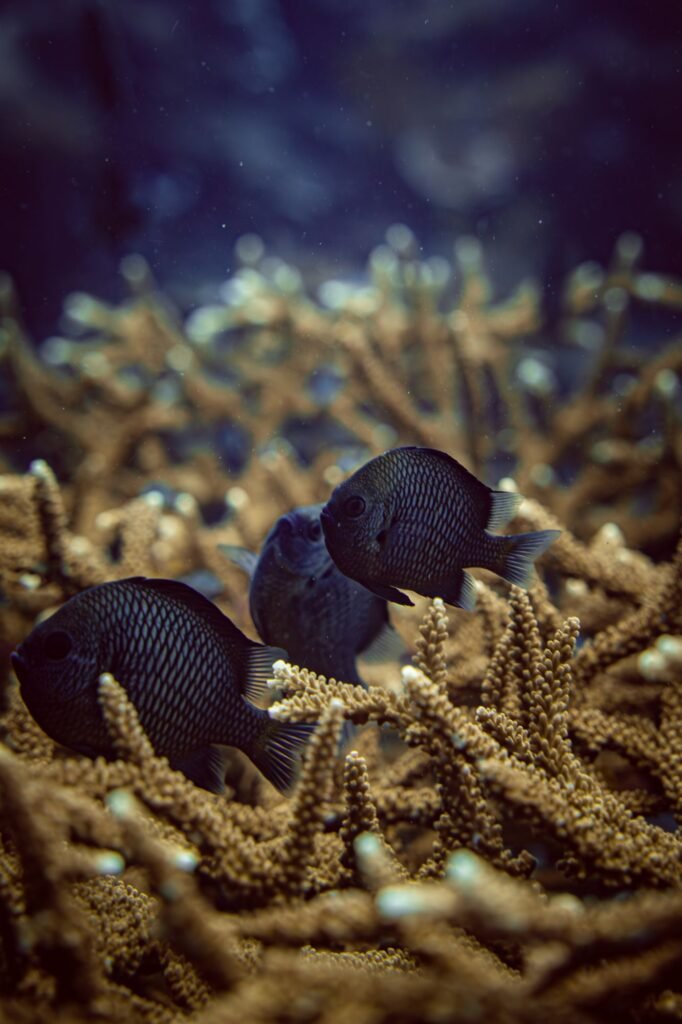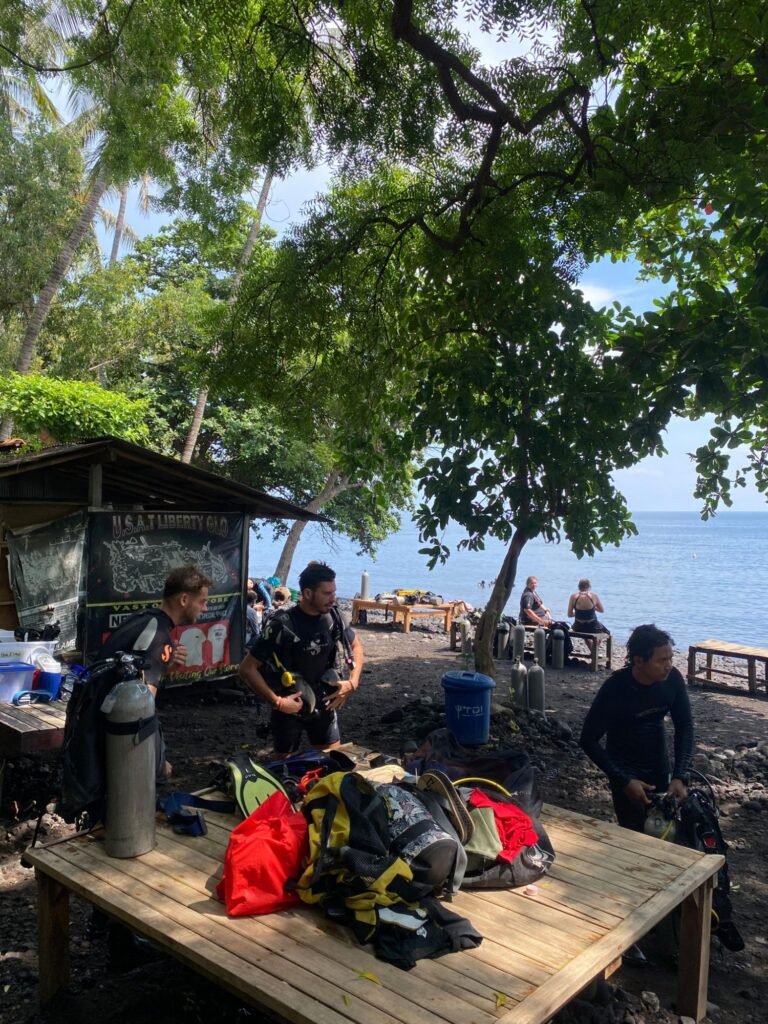
Introduction to Diving in Bali
1.1. Why Bali is a Premier Diving Destination
1.2. Overview of Bali’s Marine Biodiversity
Top Dive Spots in Bali
2.1. Tulamben – The Famous USAT Liberty Wreck
2.2. Nusa Penida – Manta Rays and Mola Mola
2.3. Menjangan Island – Pristine Coral Reefs
2.4. Amed – Macro Diving Paradise
Choosing the Right Dive Center in Bali
3.1. Key Factors to Consider (Safety, Certification, Equipment)
3.2. Best Dive Centers for Beginners
3.3. Best Dive Centers for Advanced Divers
Certification Courses Offered by Bali Dive Centers
4.1. PADI vs. SSI Certification: Which of One to Choose?
4.2. Open Water Diver Courses
4.3. Advanced and Specialty Courses (Nitrox, Wreck Diving)
Dive Packages and Pricing
5.1. Single Dives vs. Dive Packages
5.2. Average Costs of Diving in Bali
5.3. Budget-Friendly vs. Luxury Dive Centers
Ultimate Guide to Dive Centers in Bali
Introduction to Diving in Bali
Why Bali is a Premier Diving Destination
Bali, often called the “Island of the Gods,” is more than just a tropical paradise with lush rice terraces and ancient temples—it’s a diver’s haven. Nestled in the heart of the Coral Triangle, Bali offers unparalleled marine biodiversity, making it one of the world’s top scuba diving destinations. From vibrant coral gardens to mysterious shipwrecks and encounters with giant manta rays, Bali’s underwater world promises unforgettable adventures for divers of all levels.
The island’s strategic location between the Indian and Pacific Oceans allows for a rich blend of marine species. Divers can explore everything from macro critters like pygmy seahorses and nudibranchs to large pelagic species such as sharks, turtles, and even the elusive Mola Mola (ocean sunfish). Warm tropical waters, excellent visibility, and diverse dive sites make Bali a year-round diving hotspot.
Overview of Bali’s Marine Biodiversity
Bali’s marine ecosystems are incredibly diverse, encompassing coral reefs, shipwrecks, muck dive sites, and deep ocean drop-offs. The island’s underwater world is home to over 3,000 species of marine life. Divers can witness vibrant coral formations teeming with clownfish, angelfish, and parrotfish. Macro enthusiasts will find a treasure trove of critters like mimic octopuses, frogfish, and ghost pipefish in Bali’s black sand dive sites.
The current-rich waters of Nusa Penida bring nutrient flows that attract majestic manta rays and the rare Mola Mola during certain seasons. Meanwhile, Menjangan Island’s crystal-clear waters offer some of the best coral reef dives in Indonesia. Whether you’re into drift diving, wreck exploration, or macro photography, Bali has it all.
Top Dive Spots in Bali
Tulamben – The Famous USAT Liberty Wreck
Tulamben, located on Bali’s northeast coast, is home to the iconic USAT Liberty wreck. This World War II cargo ship was torpedoed by a Japanese submarine in 1942 and now rests just off the shoreline, making it one of the most accessible wreck dives in the world. Over the decades, the wreck has transformed into an artificial reef, blanketed in vibrant corals and swarming with marine life.
Divers can explore the ship’s skeletal structure, weaving through twisted metal adorned with soft and hard corals. Schools of trevally, barracuda, and bumphead parrotfish frequent the wreck, offering incredible underwater photography opportunities. Night dives at the Liberty Wreck reveal nocturnal creatures like Spanish dancers and hunting moray eels, making it a must-visit site for divers of all levels.
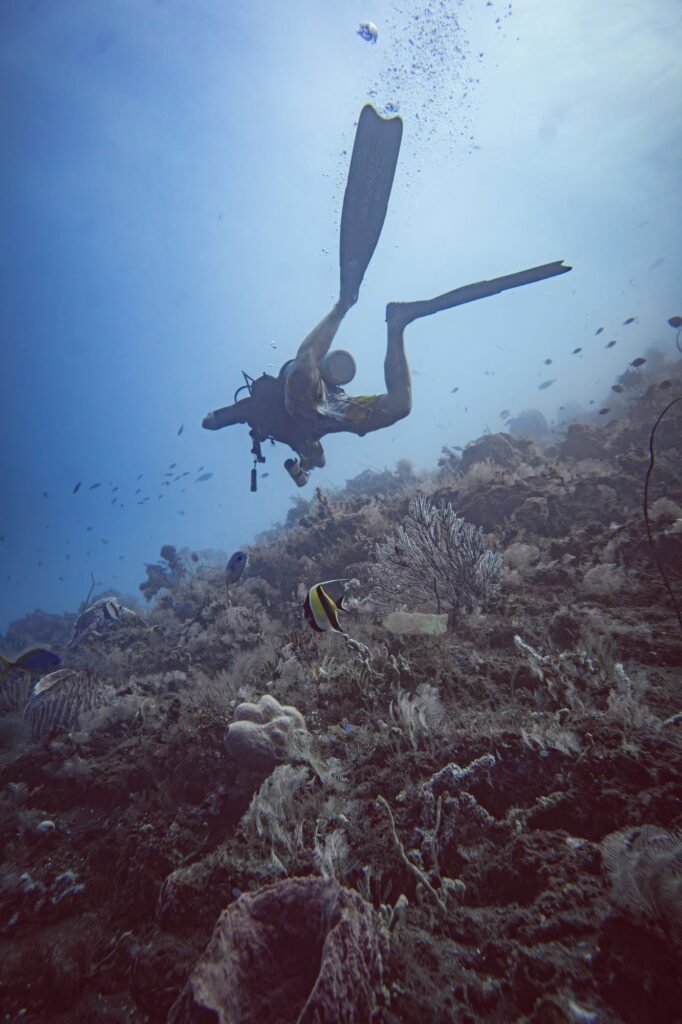
Nusa Penida – Manta Rays and Mola Mola
Nusa Penida, a large island southeast of Bali, is famous for its thrilling drift dives and encounters with massive ocean creatures. The island’s most famous dive sites—Manta Point and Crystal Bay—offer divers the chance to swim alongside graceful manta rays and spot the elusive Mola Mola during the colder months from July to October.
Manta Point, with its plankton-rich waters, is a cleaning station where mantas glide gracefully just meters away from divers. Crystal Bay, on the other hand, offers deeper dives where experienced divers can search for the giant ocean sunfish. The currents around Nusa Penida can be strong and unpredictable, so it’s essential to dive with experienced guides from reputable dive centers.
Menjangan Island – Pristine Coral Reefs
Situated within the Bali Barat National Park, Menjangan Island is renowned for its untouched coral reefs and calm diving conditions. Protected as a marine reserve, the island offers excellent visibility and vibrant coral walls teeming with marine life. Unlike the more popular dive sites, Menjangan Island is less crowded, providing a peaceful and immersive underwater experience.
Divers can enjoy easy wall dives along coral-encrusted drop-offs, spotting angelfish, moray eels, and even reef sharks. The area’s shallow reefs also make it an ideal spot for snorkelers and beginner divers. Menjangan’s healthy reefs and gentle currents are a testament to successful marine conservation efforts.
Amed – Macro Diving Paradise
Amed, a quiet fishing village on Bali’s east coast, has gained popularity among macro photography enthusiasts. Its black volcanic sand and calm bays create the perfect habitat for a variety of rare and fascinating critters. Divers can discover ornate ghost pipefish, mimic octopuses, frogfish, and nudibranchs hiding among the rubble.
Amed’s dive sites cater to all levels, with easy shore entries and relaxed diving conditions. The area’s underwater landscape is a mix of coral gardens, artificial reefs, and small wrecks. For those interested in capturing Bali’s tiniest marine wonders, Amed offers endless opportunities for macro photography.
Choosing the Right Dive Center in Bali
Key Factors to Consider (Safety, Certification, Equipment)
Choosing the right dive center is crucial for a safe and enjoyable diving experience in Bali. Here are essential factors to consider:
Safety Standards: Ensure the dive center follows international safety protocols. Check for updated equipment, emergency oxygen, and trained dive professionals.
Certifications: Look for dive centers certified by reputable organizations like PADI or SSI.
Equipment Quality: High-quality, well-maintained diving gear is vital. Ask about gear inspections and rental options.
Group Sizes: Smaller dive groups often provide better safety and personalized experiences.
Environmental Practices: Choose centers that practice eco-friendly diving and support marine conservation.
Best Dive Centers for Beginners
For beginners, it’s essential to select dive centers that prioritize safety, patience, and thorough training. Some of Bali’s best beginner-friendly dive centers offer:
Comprehensive introductory courses (Discover Scuba Diving)
Patient, multilingual instructors
Shallow, calm dive sites for first dives
Best Dive Centers for Advanced Divers
Experienced divers often seek challenging dive sites and specialty courses. Top dive centers for advanced divers typically provide:
Technical diving courses (Deep, Wreck, Nitrox)
Access to drift and deep dives at Nusa Penida
Custom dive trips to remote sites
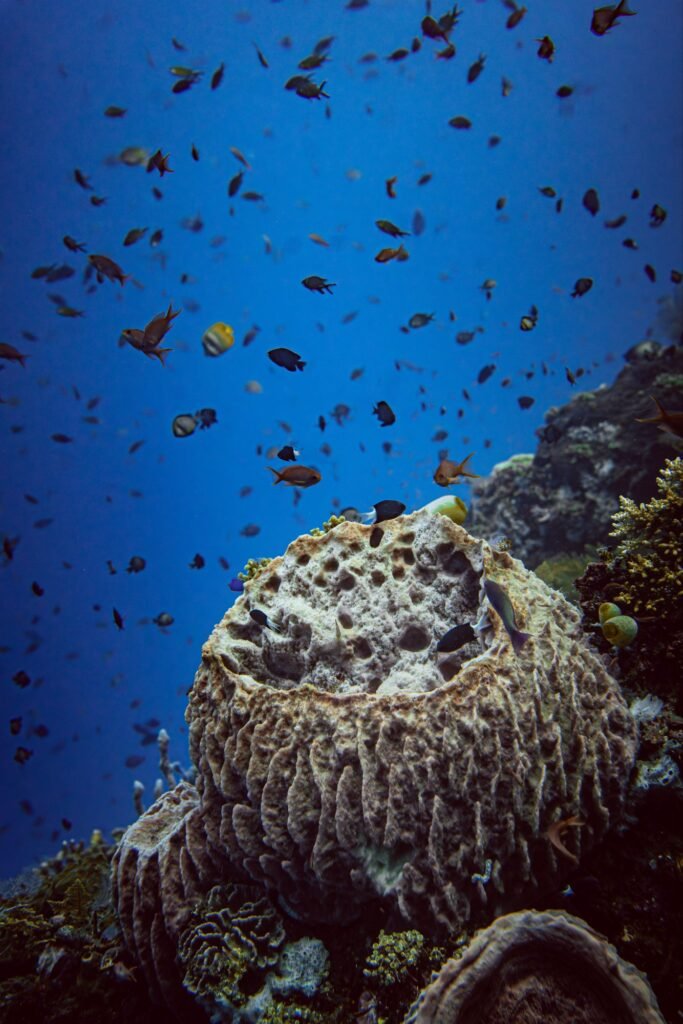
Certification Courses Offered by Bali Dive Centers
PADI vs. SSI Certification: Which One to Choose?
When choosing a dive center in Bali, one of the first decisions you’ll need to make is between PADI (Professional Association of Diving Instructors) and SSI (Scuba Schools International) certifications. Both organizations are globally recognized and offer high-quality training programs. However, each has its unique approach, and understanding the differences can help you choose the best path for your diving goals.
PADI is the most widely recognized certification agency worldwide. Their courses are highly structured, with set standards and materials that ensure consistency across dive centers. PADI certifications are ideal for travelers who plan to dive internationally du to their global recognition.
SSI offers a more flexible learning system, allowing instructors to adapt the training to the students’ needs. SSI courses often cost slightly less than PADI and offer a digital learning platform that can be more user-friendly.
Both certifications are interchangeable—having one does not restrict you from continuing advanced courses with the other. Ultimately, the choice depends on the teaching style you prefer and the dive center you feel most comfortable with.
Open Water Diver Courses
The Open Water Diver course is the starting point for anyone looking to explore the underwater world. Bali’s calm and warm waters make it an excellent place for beginners to earn their certification. This course typically spans 3-4 days and includes:
Theory Sessions: Learning about dive physics, safety procedures, and equipment.
Confined Water Training: Practicing essential skills in a pool or shallow, calm water.
Open Water Dives: Four dives in the ocean to apply skills and explore Bali’s vibrant dive sites.
Dive centers in Bali offer flexible scheduling and small class sizes to ensure personal attention. Popular beginner-friendly sites include Tulamben and Amed, with calm conditions ideal for first-time divers.
Advanced and Specialty Courses (Nitrox, Wreck Diving)
For certified divers looking to expand their skills, Bali dive centers offer a range of advanced and specialty courses. These courses provide the opportunity to explore more challenging environments and improve diving techniques. Some popular courses include:
Advanced Open Water Diver: This course allows divers to explore deeper sites (up to 30m) and develop skills in areas like underwater navigation and night diving.
Enriched Air (Nitrox) Diver: Learn how to use oxygen-enriched air to extend botom time and reduce fatigue.
Wreck Diving Specialty: Ideal for exploring Bali’s famous USAT Liberty wreck, this course teaches safe wreck penetration and navigation techniques.
Deep Diver Certification: For those interested in diving beyond 30 meters, this course provides the skills to manage deep dives safely.
These courses not only enhance your diving experience but also open up more dive sites that may require specialized skills.
Dive Packages and Pricing
Single Dives vs. Dive Packages
Dive centers in Bali offer flexible diving options to suit every diver’s schedule and budget. You can choose between single dives and multi-dive packages:
Single Dives: Perfect for casual divers or those short on time. Single dives typically include equipment rental, a dive guide, and transportation to the dive site.
Dive Packages: Ideal for divers planning multiple dives over several days. Packages often provide discounted rates and may include accommodation, meals, and transportation.
Many dive centers offer custom packages that allow divers to explore different regions of Bali, from Tulamben’s wreck dives to Nusa Penida’s drift dives.
Average Costs of Diving in Bali
Diving in Bali is relatively affordable compared to other global destinations. Prices can vary depending on the dive site, the type of dive, and the dive center’s level of service. Here’s a general pricing guide:
Single Fun Dive: $30 – $60 USD (including gear and guide)
Two-Dive Day Trip: $70 – $120 USD
Open Water Course: $350 – $450 USD (3-4 days)
Advanced Open Water Course: $300 – $400 USD
Specialty Courses (e.g., Nitrox, Wreck): $150 – $250 USD per specialty
Luxury dive centers may offer premium packages with private guides, high-end equipment, and boutique accommodation, while budget-friendly centers provide excellent value with standard services.
Budget-Friendly vs. Luxury Dive Centers
Bali caters to all types of travelers, from backpackers to luxury seekers. Here’s a breakdown of what to expect:
Budget-Friendly Dive Centers:
Basic yet safe and reliable equipment
Small group dives
Simple accommodations or partnerships with local homestays
Prices tailored to budget travelers
Luxury Dive Centers:
State-of-the-art equipment and facilities
Personalized dive plans and private guides
Luxury accommodations, spa services, and gourmet meals
Exclusive dive trips to remote sites
Whether you’re on a tight budget or looking for a lavish diving holiday, Bali has a dive center to suit your needs.
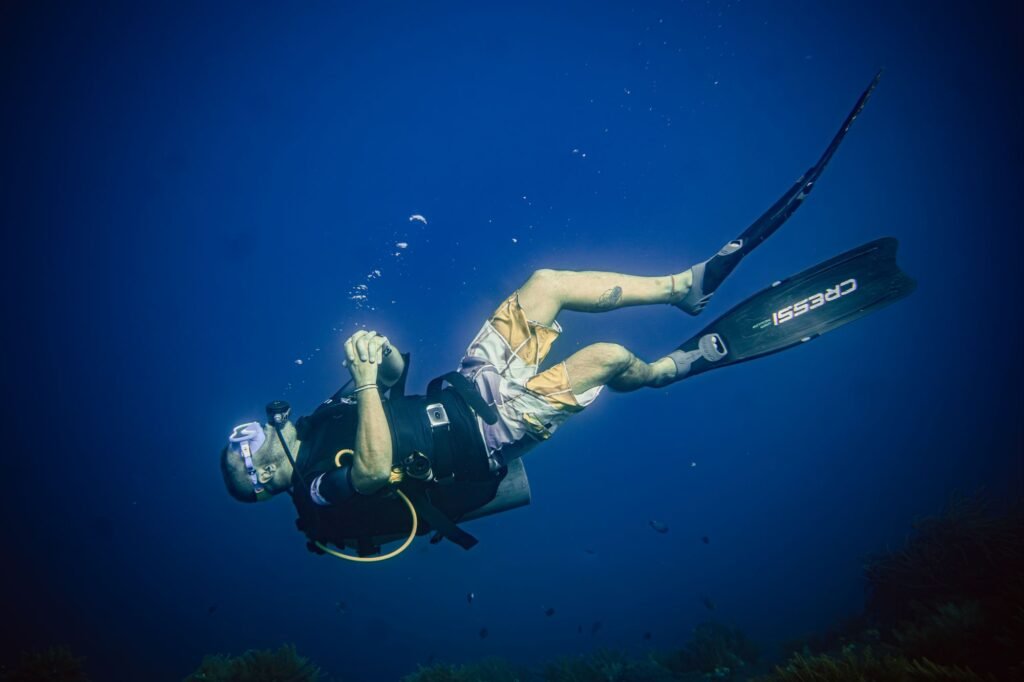
Best Time to Dive in Bali
Seasonal Diving Conditions
Bali offers year-round diving, but certain seasons provide better conditions for specific experiences:
April to November (Dry Season): This is the best time for diving, with calm seas and excellent visibility. The dry season is ideal for exploring wrecks and reefs across the island.
July to October: Peak season to spot the elusive Mola Mola in Nusa Penida. The water is colder, but visibility is outstanding.
December to March (Wet Season): Rain can reduce visibility, especially in the south. However, sites in the northeast, like Tulamben and Amed, remain relatively unaffected and are still diveable.
Marine Life Calendar
If you’re keen on spotting specific marine creatures, consider this seasonal guide:
Mola Mola (Ocean Sunfish): July to October
Manta Rays: Year-round at Nusa Penida
Macro Critters (Nudibranchs, Frogfish): Year-round, best in Amed and Tulamben
Planning your dive trip around these seasons ensures the best underwater encounters.
Dive Safety and Environmental Conservation in Bali
Safety Protocols Followed by Bali Dive Centers
Safety is a top priority for reputable dive centers in Bali. Given the diversity of dive sites—from calm bays to strong currents—professional dive operators follow stringent safety protocols to ensure divers have a secure and enjoyable experience. Key safety measures include:
Certified Dive Instructors and Guides: All dive guides and instructors must be certified by recognized agencies like PADI or SSI. Many dive centers employ experienced locals who know the waters intimately.
Regular Equipment Maintenance: Dive gear, including regulators, BCDs, and tanks, is inspected and serviced regularly to meet international safety standards.
Comprehensive Briefings: Before each dive, divers receive detailed briefings on dive plans, depth limits, entry/exit points, current conditions, and emergency procedures.
Emergency Procedures: Dive centers are equipped with first aid kits, oxygen tanks, and clear emergency protocols. Many centers are located near hyperbaric chambers, particularly around Denpasar and Sanur.
Small Group Sizes: Most reputable dive centers limit group sizes, pairing divers by experience level to ensure personalized attention and minimize risks.
For challenging dive sites with strong currents like Nusa Penida, experienced dive guides assess conditions daily and only proceed when safe. Choosing a dive center that prioritizes safety guarantees peace of mind underwater.
Eco-Friendly Practices and Marine Conservation Efforts
Bali’s dive community is deeply invested in preserving its marine ecosystems. Many dive centers actively engage in environmental conservation through various initiatives:
Eco-Friendly Dive Practices: Dive centers educate guests on responsible diving—such as not touching corals, maintaining proper buoyancy, and avoiding contact with marine life.
Reef Clean-Ups: Regular underwater clean-up events are organized to remove marine debris and plastic waste from popular dive sites.
Coral Restoration Projects: Dive centers like Blue Corner Dive and Bali Reef Divers run coral nursery programs, replenting coral fragments to rehabilitate damaged reefs.
Eco-Certifications: Many dive shops hold eco-certifications like Green Fins, which promote sustainable diving practices.
By supporting eco-conscious dive centers, divers contribute to the long-term health of Bali’s oceans.
Accommodation Options for Divers in Bali
Diver-Friendly Resorts and Hotels
Many dive centers in Bali partner with resorts and hotels to offer convenient dive-and-stay packages. These accommodations are tailored to the needs of divers, offering facilities like gear storage, rinse stations, and direct access to dive sites. Popular diver-friendly resorts include:
Tulamben Wreck Divers Resort: Located steps from the USAT Liberty Wreck, this resort offers beachfront rooms, dive lockers, and guided shore dives.
Bali Dive Resort and Spa (Amed): Combines comfortable accommodation with on-site dive operations, spa treatments, and ocean views.
Nusa Penida Dive Resorts: Boutique resorts near Manta Point and Crystal Bay cater to divers with boat access to nearby dive sites.
These resorts prioritize comfort and convenience, allowing divers to relax between dives.
Budget Stays for Backpacker Divers
Bali also offers affordable accommodations for budget travelers and backpacker divers. In dive hotspots like Amed and Tulamben, budget options include:
Homestays: Family-run accommodations offering basic but clean rooms with breakfast and Wi-Fi. Many are within walking distance of dive shops.
Dive Hostels: Dorm-style accomodations with communal areas where divers can share stories and plan group dives. Examples include Gili Air Hostel and Bali Dive Trek.
Guesthouses: Affordable rooms with private bathrooms, often operated by local families with connections to nearby dive centers.
Affordable lodging allows divers to maximize their underwater adventures without breaking the bank.
Liveaboard Diving in Bali and Beyond
Liveaboard vs. Day Diving in Bali
For divers seeking a more immersive experience, liveaboard diving is an excellent option. While Bali is known for its day dives, several liveaboard operators offer extended trips to explore remote dive sites around Bali and neighboring islands.
Day Diving: Perfect for those based in Bali, offering flexibility and affordability. Day trips cover popular sites like Tulamben, Nusa Penida, and Menjangan Island.
Liveaboard Diving: Ideal for divers wanting to reach more remote and pristine locations. Liveaboards offer multi-day excursions with all-inclusive packages covering dives, meals, and accommodation.
Liveaboard trips from Bali often venture to the Komodo Islands, Lombok, and the Gili Islands, offering wold-class diving away from the crowds.
Best Liveaboard Trips from Bali
Some of the best liveaboard experiences departing from Bali include:
Komodo National Park: Famous for its thrilling drift dives, manta rays, and the chance to see Komodo dragons on land excursions.
Lombok and the Gili Islands: Known for vibrant coral reefs, turtles, and macro life.
Alor and Flores: Remote regions with untouched reefs, whale sightings, and world-class biodiversity.
Liveaboards offer the ultimate diving escape, providing exclusive access to Bali’s most secluded dive sites.
Tips for First-Time Divers in Bali
What to Pack for Your Dive Trip
Packing the right gear ensures a comfortable and enjoyable dive trip. Here are essential items for diving in Bali:
Dive Certification Card and Logbook: Required for joining guided dives and renting equipment.
Wetsuit (3mm or 5mm): Bali’s waters range from 24°C to 29°C. A 3mm wetsuit is sufficient for most sites, but a 5mm is recommended for colder spots like Nusa Penida.
Reef-Safe Sunscreen: Protect your skin and the ocean by using eco-friendly sunscreen.
Mask and Snorkel: Having your own ensures a perfect fit.
Underwater Camera or GoPro: Capture memories of Bali’s vibrant underwater world.
Dry Bag: Essential for keeping personal items dry on boat trips.
Health and Fitness Tips for Diving
Diving requires basic fitness and good health. First-time divers should:
Stay Hydrated: Bali’s tropical heat can cause dehydration, which increases the risk of decompression sickness.
Rest Well: Get plenty of sleep before dive days to stay alert and energized.
Avoid Alcohol Before Diving: Alcohol impairs judgment and increases dehydration risk.
Listen to Your Body: Don’t dive if you feel unwel or congested. Equalizing your ears is critical for comfort and safety.
